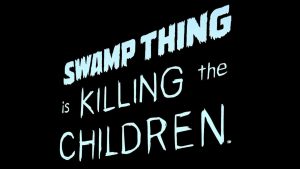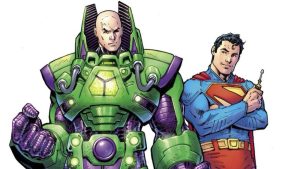Survival horror is a thriving genre that has come a long way since the days of the first PlayStation. Titles like Silent Hill f and Dying Light: The Beast prove what triple-A studios can do with the full scope of their technical potential, while the indie sphere has highlights like No, I’m Not a Human and Carimara: Beneath The Forlon Limbs that showcase some unique approaches to scary gameplay. That sense experimentation has always been one of the crucial elements for horror games, with plenty of trial and error over the years as the genre crystallized into the current form.
Resident Evil played a huge role in the growth of the survival horror genre. Launching in 1996, the action-driven horror game was a smash hit for the PlayStation. While this was an exciting development that has led to plenty of impressive games, it also inadvertently pushed a creative peer out of the limelight. It’s a shame, too, because Clock Tower, which hit the PlayStation the same year as Resident Evil, was a more methodical and tense approach to the genre. While Resident Evil might have been the winner in their initial face-off, the then-experimental approach to game design and storytelling in Clock Tower lives on in some of modern gaming’s best horror experiences.
Clock Tower was a crucial early piece of survival horror history, with a far more tense focus than the peers that would overtake it in the public consciousness. After the original Clock Tower debuted on the Super Famicom in Japan, the sequel was promptly prepared for the PlayStation by developer Human Entertainment. Launching in 1996, the PlayStation’s Clock Tower (released as Clock Tower 2 in Japan) was a narrative-driven point-and-click game, which melded investigation with survival horror. In either the role of Jennifer Simpson or her adopted mother, Helen Maxwell, the player is forced to confront the mysterious Scissorman despite his apparent death the last time Jennifer encountered him.
Released in an era of legendary point-and-click titles like The Secret of Monkey Island and Myst, Clock Tower does an admirable job of moving the gameplay style to the console controllers. The emphasis on room exploration can quickly turn into a panicked escape if the player encounters the slasher movie-style villain Scissorman. Clock Tower builds on the creepy imagery and unsettling atmosphere of the first game, expanding the story without sacrificing any of the tension, thanks to a clever design.
There’s a focus on players being clever, slick, and just a little bit lucky — with direct combat against the Scissorman a doomed option. Players just have to run and hide to avoid the killer, giving them another chance to explore the rooms for clues and other survivors of his attack if they can escape him. The point-and-click gameplay accounted for the relatively limited technical options by leaning into these elements, making it a direct ancestor to the survival horror games of today that rely on investigation in dangerous environments. With two playable characters, FMV cutscenes, and several potential endings, Clock Tower was an especially ambitious early example of the kind of horror game that dominates the genre in the present day.
The Clock Tower games were methodical approaches to horror that relied more on exploration and ambiance than action-heavy peers that rose to fame at the same time like Resident Evil or House of the Dead. It feels more in line with something like Silent Hill, which built on the exploration elements from this approach and melded it with their own art design. Despite having several jump scares to keep up the tension, the real dread of Clock Tower came from the constant sense of terror that develops naturally as a result of the deadly and random nature of Scissorman attacks.
The point-and-click approach to gameplay may seem antiquated now, but in the limited technical era of the early consoles, this was the best way to offer players a larger world and task them with exploring it. It also puts emphasis on forcing the player to quickly figure out the situation, finding the exact way around Scissorman. It was scary in a way Resident Evil wasn’t.
One of the most important aspects of Clock Tower is that it doesn’t give the player a gun or put them in the role of a trained soldier like Resident Evil; it forces them into the shoes of two regular women who are unprepared for the forces coming after them. Modern horror titles like Silent Hill f or Resident Evil 7: Biohazard build on that same legacy, albeit now with more pristine graphics and enhanced gameplay options.
Clock Tower also embraces a wild horror plot in the kind of way film series like Friday the 13th or Nightmare on Elm Street do, fusing the visually distinct killer with a surrealist terrorscape akin to the works of John Carpenter. The creepy tone and effective (and memorably weird) story make for a deeply memorable and haunting world. Clock Tower wasn’t like anything else in the video game space, especially on consoles — which makes its relative obscurity all the more disappointing.
Horror games experienced an evolution once gaming reached 16-bit graphics. Although some games like Sweet Home found ways to infuse scary tension into the top-down adventure game design of the 8-bit era, Alone in the Dark showcased how a larger — but limited — gameplay space could benefit the genre. Escaping killers and solving puzzles placed players in their own little horror movies, an approach that Clock Tower excelled at.
Over the years, the genre has always wrestled between leaning fully into the ambiance and storytelling (such as the Silent Hill games) or embracing a more action-heavy approach (as with the Resident Evil games). The latter became the defining series of the genre when it debuted not long after Clock Tower on the PlayStation, helping define Sony as a genuine rival to Nintendo and SEGA. At the same time, Clock Tower‘s focus on exploration and storytelling was a bold choice for consoles, and one that ultimately didn’t pay off.
Overshadowed by the success of Capcom’s Resident Evil, Human Entertainment eventually went bankrupt, and the Clock Tower series came to an ignoble conclusion after 2002’s Clock Tower 3. The series isn’t completely forgotten, though. The Super Famicon original received a modern re-release in 2024 with Clock Tower: Rewind. It’s a good port of the title that revisits an important step forward for the genre. However, the cult classic sequel deserves just as much modern recognition, given its place as a touchstone in the development of the survival horror genre.
While it was criticized at the time for its slow gameplay and the point-and-click approach can be tricky to readjust to from modern gaming sensibilities, Clock Tower was a great showcase for how horror games could ratchet up the tension without sacrificing the story or gameplay. By putting emphasis on running, hiding, and ultimately outsmarting the monstrous enemy, Clock Tower is a crucial early part of a gaming tradition that eventually led to games like Five Nights at Freddy’s, Amnesia, Outlast, and Alien Isolation. Those titles and their fans owe a debt to the developers behind games like Clock Tower, which proved that there were more ways to approach a horror game than just the S.T.A.R.S. way.
The post This PS1 Horror Game Showed Just How Experimental the Genre Was Before Resident Evil Took Over appeared first on ComicBook.com.




